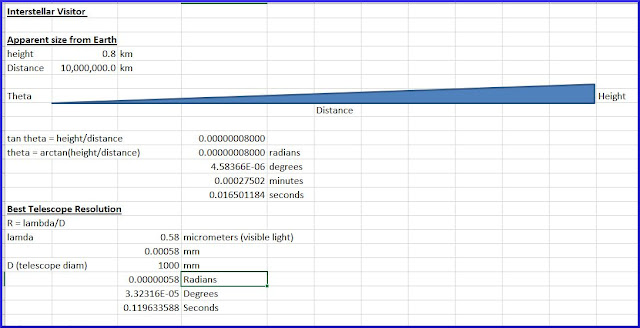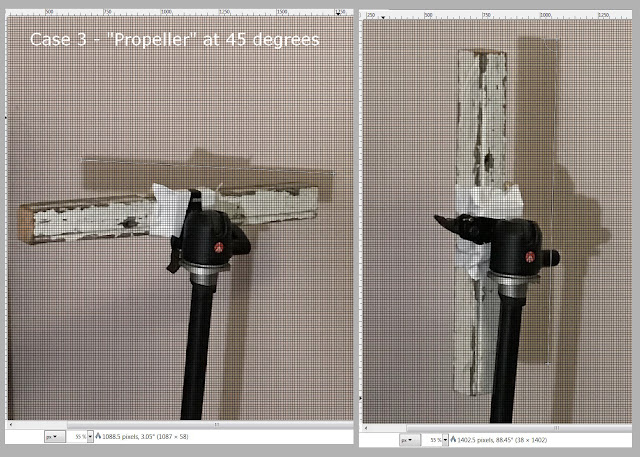A Christmas Miracle at the Lake
Here's a heart warming Christmas tale, by Helena Puumala. It follows the characters in her "at the lake" stories, as they spend Christmas at the snowed in confines of their summer cottages, where something wonderful happens on Christmas Eve.U.S.: https://www.amazon.com/dp/B00RAWMO32
U.K: https://www.amazon.co.uk/dp/B00RAWMO32
Canada: https://www.amazon.ca/dp/B00RAWMO32
Three Holiday Stories, Plus One
In the Western World, three holidays dominate the imagination - Christmas, Easter and Halloween. They occur at critical times of the year, mid-Winter, Spring and late Autumn, and deal with the very deep issues of life, death and new life (or continuing life). These stories pick up on those themes, via several families who grapple with strange events and their spiritual and paranormal significance, though the ordering is a bit different than the conventional one.The first story is set at Halloween and details a young girls awakening knowledge of her paranormal and spiritual energies. The next story is set at Easter and introduces religious and ethical tensions, and the promise of rebirth. The last story is set at Christmas, and deals with the theme of how life can overcome death, and forgiveness and acceptance can overcome bigotry. A bonus story also deals with the life and death issues. especially how different people deal with grief.
U.S.: https://www.amazon.com/dp/B06Y4T5CFW
U.K: https://www.amazon.co.uk/dp/B06Y4T5CFW
Canada: https://www.amazon.ca/dp/B06Y4T5CFW
Miranda and the Christmas Elf
The little pre-school girl, Miranda, is feeling unsafe because of bullies in the neighbourhood and family troubles between her mother and father. Can her friend, young elementary grade age Nathan, use his special powers to call on the North Pole for some Christmas Eve magic, to help her out?The story is a heartwarming Christmas tale, suitable for children and adults, which will bring a little Christmas magic to us all. It is about 9000 words, or around an hour or so, at typical reading speeds.
U.S.: https://www.amazon.com/dp/B019MCY3RM
U.K.: https://www.amazon.co.uk/dp/B019MCY3RM
Canada: https://www.amazon.ca/dp/B019MCY3RM
--------------------------------------------------------------------------------------------------------------
Strictly speaking, the next ones aren't Christmas themes, but they are great stories for kids, and therefore nice virtual stocking stuffers, for your little ones. Reading a story to (or with) your child on Christmas Day is a great way to bond, and to create wonderful memories for the future.
 Nathan’s Adventure In the Other-Other Land: A Children’s Story: Book 1 - To Rescue a Princess
Nathan’s Adventure In the Other-Other Land: A Children’s Story: Book 1 - To Rescue a Princess
Young Nathan discovers some new playmates in the Other-Other Land, a
wonderful, magical world that exists behind the Magic Mirror. But
disaster strikes, and Nathan must help Prince Roland rescue his sister,
the Princess Pepper, from the clutches of the Black Flying Dragon of the
Dark Mountain. But the rescue will not be easy. There are said to be many fearsome obstacles along the way, including treacherous quicksand swamps, complete with monsters, poisonous mushrooms that can walk and jump and that hate people, and ferocious bands of roaming tigers. And then, there is the dragon and his minions to contend with.
Will Nathan and Roland (with the aid of their trusty ponies) outwit their enemies and overcome the many dangers of the journey to the Dark Mountain? Can they save the feisty Princess Pepper? Come along for the ride and find out for yourself.
The story is about 10,000 words, a suitable length for an elementary grade child to read in an hour or two. It can also be read to a younger child over a few bed-times. There are 15 short chapters with 15 original hand-drawn pictures to go along with them. Note that the writing includes some humorous passages that parents and older readers will enjoy.
The book is available from Amazon in both e-book and print versions.
https://www.amazon.com/dp/B00PHAEFLS
https://www.amazon.co.uk/dp/B00PHAEFLS
https://www.amazon.ca/dp/B00PHAEFLS
Nathan's Adventure in the Other-Other Land, A Children's Story: Book 2 - To Defeat the Wizard's Curse
Young Nathan, a resident of our everyday world, is called back to the
Other-Other Land, beyond the Magic Mirror, for another adventure. On
this occasion he must aid the Princess Pepper in her efforts to overcome
a drought that is slowly making the Other -Other Land barren, and
leaving its people at risk of famine. She is sure that it is the result
of a curse by an evil Wizard, who is in cahoots with the Kingdom’s
enemy, The Terrible Bing. She, Nathan and his cousin Scott, must travel
far to discover the source, and hopefully lift the curse, perhaps with
the help of the Princess’s long-lost mother. Many dangers lurk along
the way – evil Wizards don’t take kindly to children tampering with
their nasty schemes.
https://www.amazon.com/dp/B01N5ERZMJ
https://www.amazon.co.uk/dp/B01N5ERZMJ
https://www.amazon.ca/dp/B01N5ERZMJ
==========================================================================
And if you enjoyed Helena Puumala's short fiction, try her longer Science Fiction and Romance series, Kati of Terra and The Witches' Stones. Both are on Kindle Unlimited, and The Witches' Stones books are on special Kindle Countdown from Dec 26 to 29.
Kati of Terra Book One - Escape from the Drowned Planet
https://www.amazon.com/dp/B00811WVXO
https://www.amazon.co.uk/dp/B00811WVXO
https://www.amazon.ca/dp/B00811WVXO
In saving her small son from alien abductors, a 24-year-old Earth woman, Katie, finds herself abducted instead. She awakens from a drug-induced coma on a spaceship, in a room full of children, both human and alien, and two other women, younger than she is. The young women adapt to the situation as best they can, keeping the youngsters calm and entertained. But, when a drugged alien man wearing a uniform is added to the captive cargo, it becomes clear that this is an intergalactic slave operation.
The slave traders implant their captives with “translation nodes” in order to allow communication among various groups. These are living entities, normally docile, merely enhancing certain brain functions, such as language acquisition. However, Katie discovers that she has accidentally received a very special “granda node”, a long-lived node with its own cantankerous personality, including a fondness for criminality and lethal weaponry. Fortunately for Katie, it also values its freedom. With its help, she escapes on a fringe planet, dragging the peace officer along—also at the granda’s suggestion.
She finds herself on a strange world, with a somewhat deranged personality, quite possibly a killer, in her head, and partnered with a man from an advanced civilization who abhors killing. He is a Federation Peace Officer, captured by the slavers while attempting to bring them to justice. His task is complicated by the fact that he has sworn to avoid the taking of sentient life during the performance of his duties. He can and does, however, make vigorous use of non-lethal weaponry. Since, before leaving the ship, Katie had promised to help her co-captives gain their liberty, she and the alien peace officer find that they have a common cause.
But first they must find their way off the primitive planet and get to the Federated Civilization, avoiding the slavers who have been left on the planet to re-capture them. Their flight is complicated by the fact that the planet has had a global warming catastrophe some centuries back – the locals refer to it as the Drowned World. This has forced the inhabitants to revert to a pre-industrial state of development; however, they are a wily and resourceful people, mostly helpful, but they can also be dangerous.
Kati (to mark her escape, she adopts a slight name change) and Mikal seek a Federation beacon, which had been hidden on this planet ages ago, to aid in situations such as this, (in accord with a longstanding Federation policy for fringe worlds). They must embark on an arduous trek across two continents and an ocean, seeking the temple that holds the beacon. They travel on foot, by cart, by riverboat, by tall sailing ship, and on pack animals, always pursued by the dangerous slavers.
They must rely on their wits, guile, charm and acting abilities to avoid recapture, while their chasers have advanced technology and ruthlessness on their side. Fortunately, they are able to make many friends who help them along the way, and their quest becomes a series of adventures, both frightening and funny, and involving a cast of engaging characters.
To complicate matters, Kati finds herself falling in love with Mikal, the strange, handsome and amusing alien. He seems to be reciprocating, though they both struggle against an untimely romantic entanglement.
Will Kati and Mikal escape from the Drowned Planet? Can they ultimately bring the slavers to justice, as Mikal has sworn to do? Can they free the remaining captives of the slavers, as Kati has promised to do? Read this book and the rest of the series to find out all.
At about 200,000 words (equivalent to a paperback of about 400 pages), the book is an excellent value.
The Witches' Stones Book One - Rescue from the Planet of the Amartos
Sarah Mackenzie had trained as a space ship mechanic at the Space Port of her home city on Earth. She left Earth to explore the galaxy, and, some months later, landed a dream assignment, to become the ship mechanic of an Explorer ship, the Beth 117.The Beth was on its way to a planet at the edge of the galaxy, where its crewmembers were to search for the Witches’ Stones, or amartos, the mysterious crystals, which the Witches of the world, Kordea, use to channel and augment their psychic energies.
Sarah has no idea that she, herself, happens to be Stone-sensitive, just like the Witches are.
Under perilous circumstances, she comes across the cache of the Stones which the Explorers are looking for, and, unwittingly, “keys” them, igniting a psychic blaze that attracts the attention of The Organization, the implacable foe of the Terra Confederation, the centuries-old star-spanning government of most of the human race, and its non-human allies. To make use of amarto-energy, The Organization needs, not just the Stones, but also amarto-sensitive individuals whom they enslave to the devices which they have developed in their pursuit of galactic domination. Thus, they want not just the cache of Stones; they also want Sarah.
To forestall galactic war, rescuers, from a counter-intelligence group, known as The Agency, are sent to the Planet of the Amartos. A fast scoutship, manned by an Agent and a Pilot, must try to fetch Sarah and the amartos, bringing them to a safe haven among the Kordean Witches.
Sarah, herself, has to deal with serious conflicts. In the psychic realm she must choose between The Organization and the Kordean Witches, while retaining mastery over her own mind. In the physical reality, she has become the centre of an armed battle between the Terran scoutship and a military task force sent by The Organization to capture her and the Stones. Her determination to keep control of her own self sends her into unexplored mental realities, while exciting but dangerous physical events swirl around her and the crew of the scoutship, Camin.
To further complicate things, she senses within herself, the beginnings of an attraction to the handsome Agent sent to rescue her. However, she’s merely a naive young woman from Earth; surely, her hopes are beyond realization....
The novel is about 100,000 words, or 250 pages. It is the first book in the Witches' Stones series, which will explore the struggle for power among the Terra Confederation, the Kordean Witches and The Organization, as well as the personal and romantic entanglements of the characters. Book 2 will follow in May, 2015.
https://www.amazon.com/dp/B008PNIRP4
https://www.amazon.co.uk/dp/B008PNIRP4
https://www.amazon.ca/dp/B008PNIRP4
















